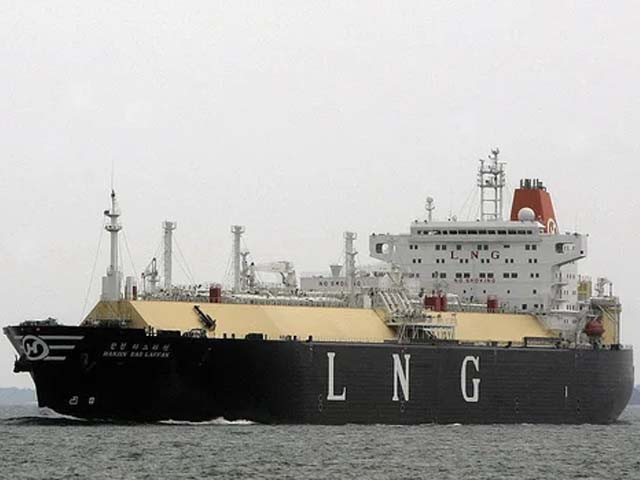Pakistan’s natural gas demand-supply gap, currently at 1,440 MMCFD, is projected to rise to 3,684 MMCFD by 2024-25 and 5,389 MMCFD by 2029-30. For a country that relies on indigenous and imported gas for more than 40% of its energy requirements, this is an alarming situation. And it has been here for some time now. In fact, the country’s industrial sector has been reeling from the constraint for the better part of this decade as even with the induction of imported RLNG in 2015 the country is far from overcoming its energy woes.
This industrial bottleneck has also had a profoundly adverse impact on the country’s export-oriented industries and, consequently, on its external account. But despite the incumbent government’s overwhelming focus on correcting the current account deficit (CAD) and growing exports, avenues of bridging this energy gap remain underexplored due to ineffective decision-making structures and non-existent employment of across the board cost-benefit comparisons. The country’s industrial sector has been operating below capacity for some time now, but opportunities to optimise production and consequently exports, in the wake of historically low energy prices, have been woefully underutilised. RLNG prices plummeting to $2/MMBTU presented the country’s industry with an extraordinary opportunity, but not only were the private importers not allowed to jump in until prices had rebounded higher, the subsequent go-ahead remains ineffective due to the monopolisation of state-owned enterprises.
The country currently has two LNG terminals with capacities of 690 MMCFD and 750 MMCFD. The second terminal remains underutilised with 62% and 51% utilisation in FY19 and FY20, respectively. Private usage of this idle capacity seems to be a no-brainer as it would not only, in the prevailing price scenario, provide a cheaper source of energy for many industrial users and therefore help in enhancing their export competitiveness, but it will also allow indigenous gas to be diverted to uses it is more suited for and reduce the probability of gas shortage for domestic consumers.
Despite the spot price rebounding from around $2 in April, the current price still enables feasible induction into several industrial uses. In fact, in the prevailing price scenario, the move could open up avenues of coveted foreign exchange earnings, including through unconventional commodities like Urea as RLNG (after accounting for averaged relevant T&D costs) comes up to, at a $4 spot price, around PKR915/MMBTU, cheaper than PKR1021/MMBTU that the fertiliser sector currently pays for its fuel gas and which is marked for an upward revision. At a $2 spot price, the cost would have been reduced to PKR575/MMBTU, which would have been even cheaper than the subsidised RLNG feedstock price designated for two companies at PKR756/MMBTU. With the country’s domestic Urea demand projected to fall short of production capacity by 0.6-0.8 million tonnes in 2020, the surplus could have translated into a foreign exchange earning to the tune of USD125-170mn. A substantial differential, especially when put into context of the commemorative reception of a USD424mn surplus in July 2020 and the FY20 CAD coming up to USD2.96bn.
The regulatory framework, however, prevents the private sector from exploiting such opportunities. Even without the projected fall in domestic demand, the import structure has created an unnecessary market anomaly, restraining private companies from switching to a low-cost energy alternative. The problem stems from the markedly centralised nature of essentially commercial decision making. The optimum capitalisation of emerging opportunities and pertinent response measures can only be ensured when the regulatory setup allows the decision-making in this regard to be divested to private entities which are exposed to the economic consequences of these decisions. These entities are best placed to make the relevant cost-benefit comparisons and act upon them when it becomes commercially viable.
In the context of RLNG, this becomes even more important because Pakistan remains a highly price-sensitive market. This means that commercial operations on the basis of cost calculations that might seem feasible in the current price scenario might not be so a few months from now. Centralised policymaking seems to make little sense in this context as it usually is quite protracted due to the required on boarding of a long list of regulatory stakeholders taking months if not years to complete, resulting in timelines that make dynamic decision-making impossible.
Moreover, there is also an urgent need to expand the country’s RLNG import capacity, which currently stands at 1440 MMCFD, if the country intends to sustainably curtail its external account deficit. Import restrictions can only help for so long to manage the current account balance and cannot be relied upon indefinitely as they have natural repercussions for the economic growth of the country. In order to balance the management of current account deficits with economic growth targets, Pakistan needs to expand its export base which requires investing in its industrial sector and plugging bottlenecks. With the local energy reserves plummeting sharply and hindrances in industrial operations caused by the resulting constraints all too familiar, energy alternatives need to be considered dynamically to optimise commercial efficacy and competitiveness of the domestic industry.
RLNG is already an important alternative with its share in natural gas supplies increasing to 27 percent in FY2018-19 from 24 percent in the preceding year and the trend is expected to sustain. It is also an alternative which can be employed at a relatively shorter timescale than others. Against this backdrop, it has become more important than ever then to prioritise sourcing optimisation, and to ensure that effective decision making and cost-benefit comparisons are allowed for private undertakers.



COMMENTS
Comments are moderated and generally will be posted if they are on-topic and not abusive.
For more information, please see our Comments FAQ